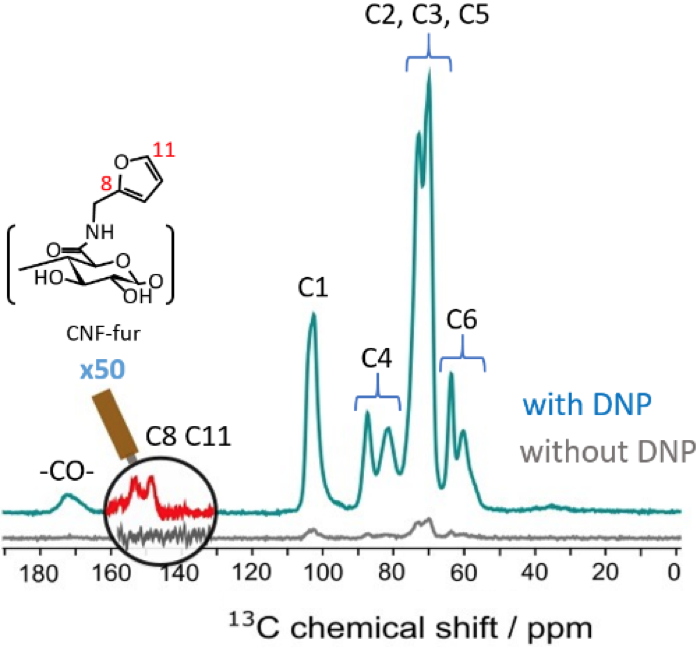Cellulose nanofibrils (CNF) obtained from wood are a biosourced and renewable material that is of interest in recent applications, for example fibers and composites for concrete, the automotive industry or packaging materials. In addition, the large specific surface area of CNFs (50-150 m2/mg), their non-toxicity and their high mechanical stability also make them relevant as nano-chemistry platforms, especially for innovative applications in the fields of energy or health. In the health field, for example, nanofibrils are being considered as "smart" drug delivery systems with controlled release. However, the success of this approach depends heavily on the ability to understand in detail the surface chemistry involved in grafting the active molecule.
IRIG researchers, in collaboration with the Centre Technique du Papier (CTP) and three other Grenoble laboratories (LGP2, DPM and CERMAV), have succeeded in studying in detail the surface of CNFs functionalized by a therapeutic molecule. The results were obtained thanks to an original characterization technique developed at IRIG: high-resolution solid-state NMR coupled with dynamic nuclear polarization (DNP). This technique increases the sensitivity of conventional solid-state NMR by several orders of magnitude. Thus, while this study focused on CNF with a low grafting rate, DNP has allowed us to obtain important information on their surface chemistry during the different transformation steps, from the starting material to its functionalization.
Regarding the starting material, the researchers were able to detect unambiguously fragments of the chemical compound
TEMPO used for the pre-oxidation of CNF. They were also able to detect the presence of depolymerized cellulosic units. After grafting on the surface of the CNFs, the data obtained by DNP reveal the persistence of the presence of residual coupling agents used for the functionalization reaction (amidation), even after several washings. Moreover, the measurements allow estimating the amount of active molecules present on the surface, while differentiating adsorption from covalent grafting. This remarkable information could be obtained without using isotopic labelling, which was out of reach for conventional characterization techniques.
These initial results pave the way for using the information provided by DNP for the development of efficient and reproducible surface chemistry of cellulose nanofibrils.

13C multi-CP5 NMR spectra of CNF-t, shown with peak deconvolution of C6, C4, C1.
Spectra with (Blue) and without (Grey) the application of microwave irradiation suitable for DNP enhancement on CNF.
The inset shows x50 magnified view of the 115–165 ppm region for CNF-fur.
TEMPO: (2,2,6,6-Tetramethyl-piperidin-1-yl)oxy.